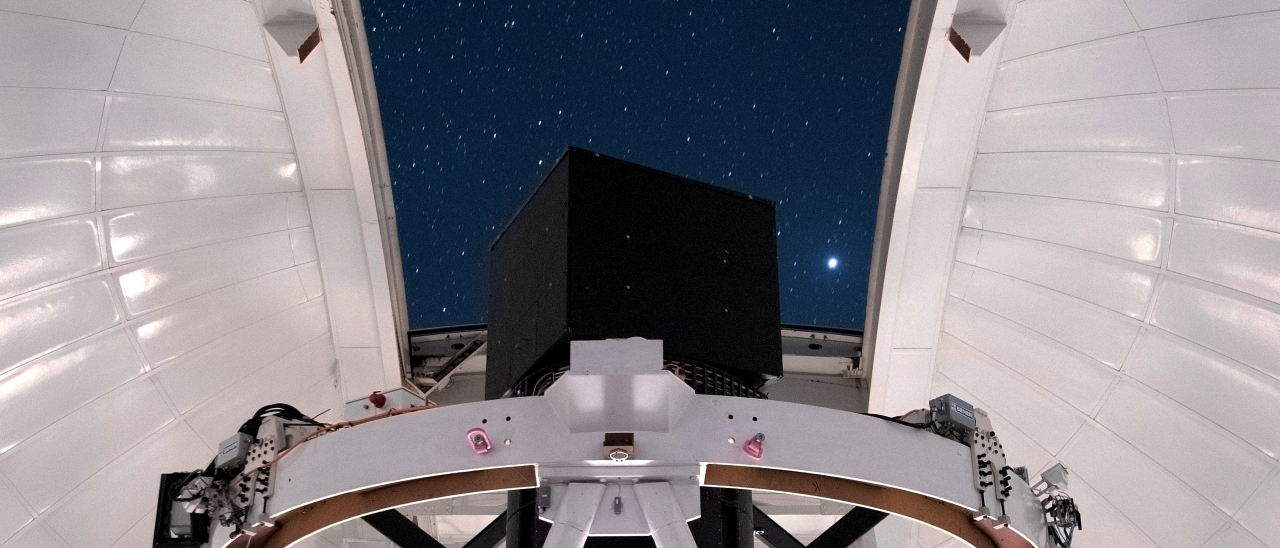Using the set of first-light observations from the new William Herschel Telescope Enhanced Area Velocity Explorer (WEAVE) wide-field spectrograph, a team of more than 50 astronomers, led by Dr Marina Arnaudova at the University of Hertfordshire, presents the first WEAVE scientific results on Stephan’s Quintet.
This state-of-the-art wide-field spectrograph is a 20-million Euro project that brings together leading experts from around the world. WEAVE is set to revolutionise our understanding of the Universe, offering unprecedented detail, as demonstrated in this new study of Stephan’s Quintet.
Stephan's Quintet, also known as the Hickson Compact Group 92, is a nearby galaxy group that consists of five galaxies (NGC 7317, NGC 7318a, NGC 7318b, NGC 7319 and NGC 7320c). Ever since its discovery in 1877, it has captivated astronomers, particularly because it represents a galactic crossroad where past collisions between galaxies have left behind a complex field of debris.
Dynamical activity in this galaxy group has now been reawakened by NGC 7318b, a galaxy smashing through it at an incredible speed of over 2 million miles per hour (3.2 million kilometres per hour), leading to an immensely powerful shock, much like a sonic boom from a jet fighter. This system thus presents an ideal laboratory to understand the chaotic and often violent relationship between galaxies, and as such was the focus of the first-light observation by the WEAVE Large Integral Field Unit (LIFU).
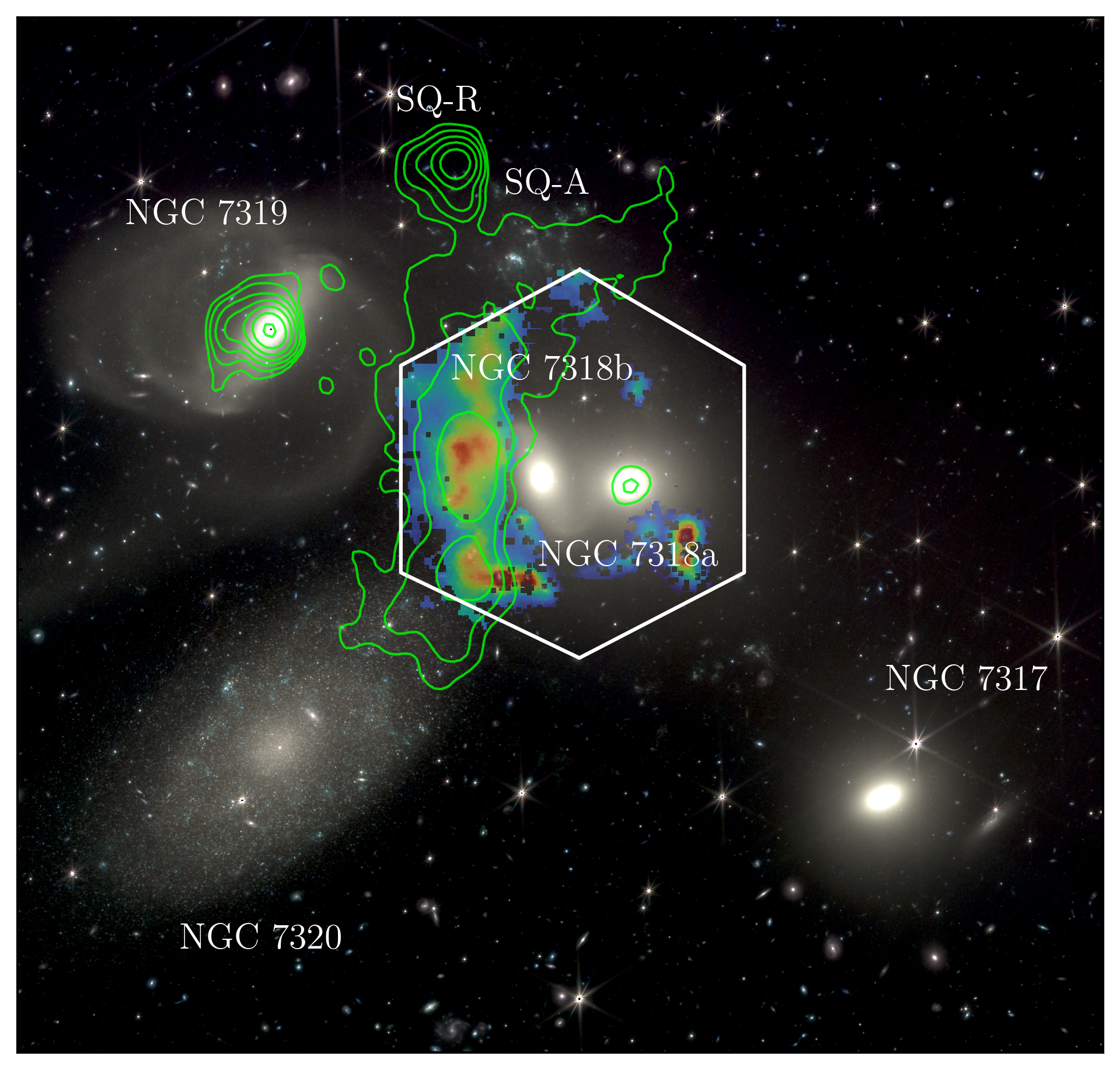
Published in the Monthly Notices of the Royal Astronomical Society (MNRAS), Dr Arnaudova and her team provide a new insight into the large-scale shock front. By combining data from WEAVE's LIFU with other cutting-edge instruments such as the Low Frequency Array (LOFAR), the Very Large Array (VLA), and the James Webb Space Telescope (JWST), they have found a previously undiscovered dual nature of the shock.
As the shock moves through pockets of cold gas, it travels at hypersonic speeds—several times the speed of sound—powerful enough to rip apart electrons from atoms, leaving behind a glowing trail of charged gas, as seen with WEAVE. However, when the shock passes through the surrounding hot gas, it becomes much weaker. Instead of causing significant disruption, the weak shock compresses the hot gas, resulting in radio waves that are picked up by radio telescopes like LOFAR.
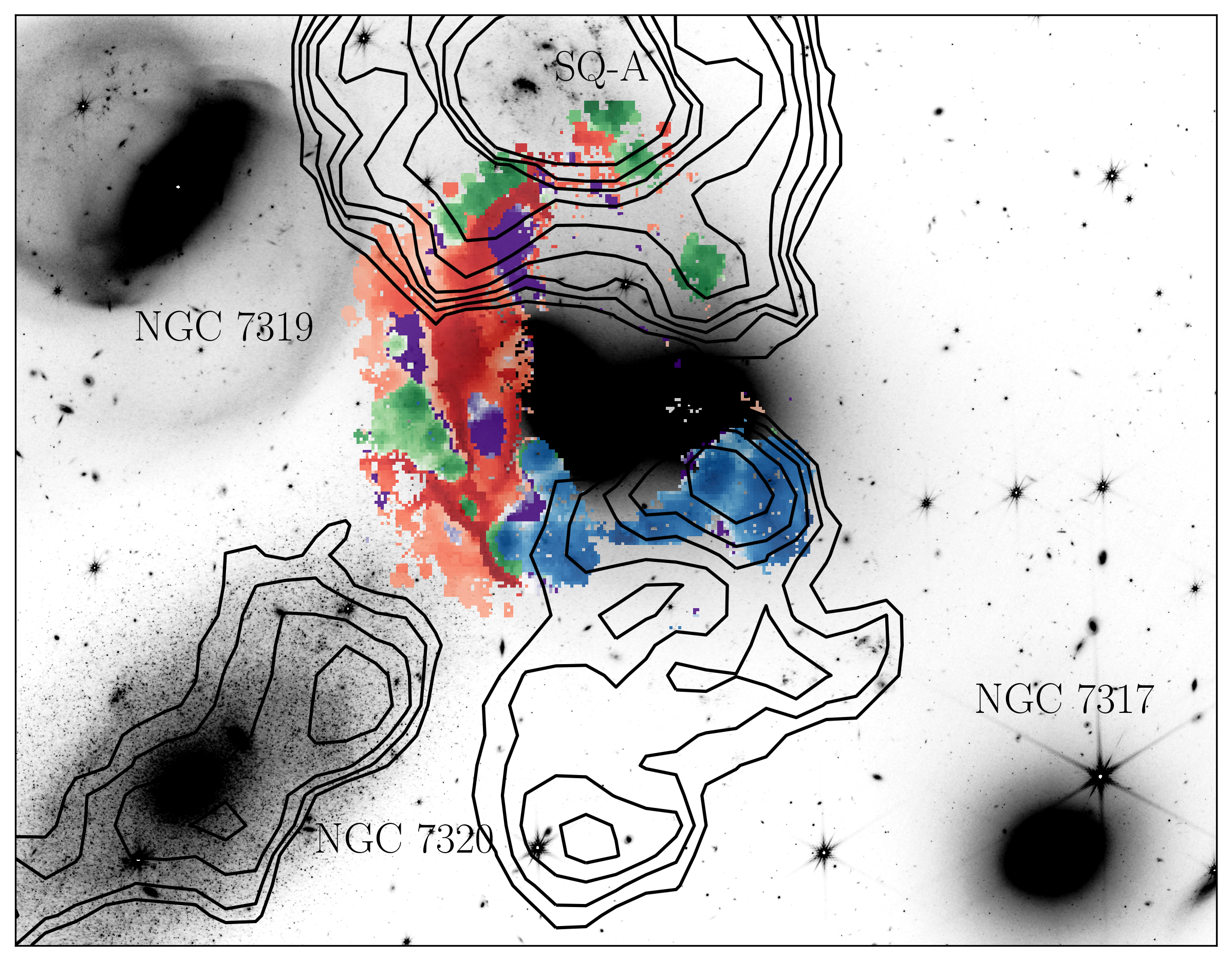
Dr Arnaudova said: "This system thus presents an ideal laboratory to understand the chaotic and often violent relationship between galaxies, and as such was the focus of the first-light observations by the WEAVE Large Integral Field Unit (LIFU)."
Dr. Marc Balcells, Director of the Isaac Newton Group of Telescopes, said: "I'm excited to see that the data gathered at the WEAVE first light already provide a high-impact result, and I'm sure this is just an early example of the types of discoveries that will be made possible with WEAVE on the William Herschel Telescope in the coming years."
Professor Gavin Dalton, WEAVE Principal Investigator at RAL Space and the University of Oxford, said: "It's fantastic to see the level of detail uncovered here by WEAVE. As well as the details of the shock and the unfolding collision that we see in Stephan's Quintet, these observations provide a remarkable perspective on what may be happening in the formation and evolution of the barely resolved faint galaxies that we see at the limits of our current capabilities."
WEAVE funding and construction
The ING initiated plans to build WEAVE after extensive consultation with the ING user community about what was needed for the future. There was a broad consensus that a world-class wide-field multi-object spectrograph was required to exploit from the ground the huge surveys being undertaken by powerful telescopes such as as ESA's Gaia, thereby helping to address the main astrophysical challenges foreseen for the next decade.
In 2016, the multi-lateral agreement to design and build WEAVE was signed by the countries of the ING partnership (the UK, Spain and the Netherlands), joined by France and Italy, with each country contributing major components as listed below, and with the ING providing auxiliary systems and overall project management.
The consortium is led by Gavin Dalton from the University of Oxford and RAL Space as Principal Investigator, Scott Trager from University of Groningen as Project Scientist, Don Carlos Abrams from the ING as Project Manager, and Chris Benn from the ING as Instrument Scientist. The main components of WEAVE are:
Fibre positioner, developed by the University of Oxford in the UK, with support from the Instituto de Astrofísica de Canarias (IAC) in Spain.
Prime-focus system, designed by ING, IAC and SENER, provided by the IAC and manufactured by SENER. Support from Konkoly Observatory (HU). Lenses were polished by KiwiStar in New Zealand, funded from STFC, NOVA, INAF, IAC and ING, and mounted at SENER Aeroespacial (ES) by SENER and ING.
Spectrograph, built by NOVA in the Netherlands with optical design by RAL Space in the UK, optics manufactured at INAOE (MX) and with support from INAF (IT) and the IAC.
Field rotator, provided by IAC and manufactured by IDOM (ES). Optical fibres, provided by the Observatoire de Paris in France, manufactured in France, Canada and USA.
LIFU, built by NOVA (NL).
CCD detectors system, provided by Liverpool John Moores University in the UK. Data processing, analysis and archiving led by the University of Cambridge (UK), IAC (ES) and FGG-INAF (IT) respectively.
Observatory control system, built by the ING.
WEAVE's construction has been funded by the Science and Technology Facilities Council (STFC, UK), the Netherlands Research School for Astronomy (NOVA, NL), the Dutch Research Council (NWO, NL), the Isaac Newton Group of Telescopes (ING, UK/NL/ES), the Instituto de Astrofísica de Canarias (IAC, ES), the Ministry of Economy and Competitiveness (MINECO, ES), the Ministry of Science and Innovation (MCI, ES), the European Regional Development Fund (ERDF), the National Institute for Astrophysics (INAF, IT), the French National Centre for Scientific Research (CNRS, FR), Paris Observatory – University of Paris Science and Letters (FR), Besançon Observatory (FR), Region Île de France (FR), Region Franche-Comté (FR), Instituto Nacional de Astrofísica, Óptica y Electrónica (INAOE, MX), National Council for Science and Technology (CONACYT, MX), Lund Observatory (SE), Uppsala University (SE), the Leibniz Institute for Astrophysics (AIP, DE), Max-Planck Institute for Astronomy (MPIA, DE), University of Pennsylvania (US), and Konkoly Observatory (HU).
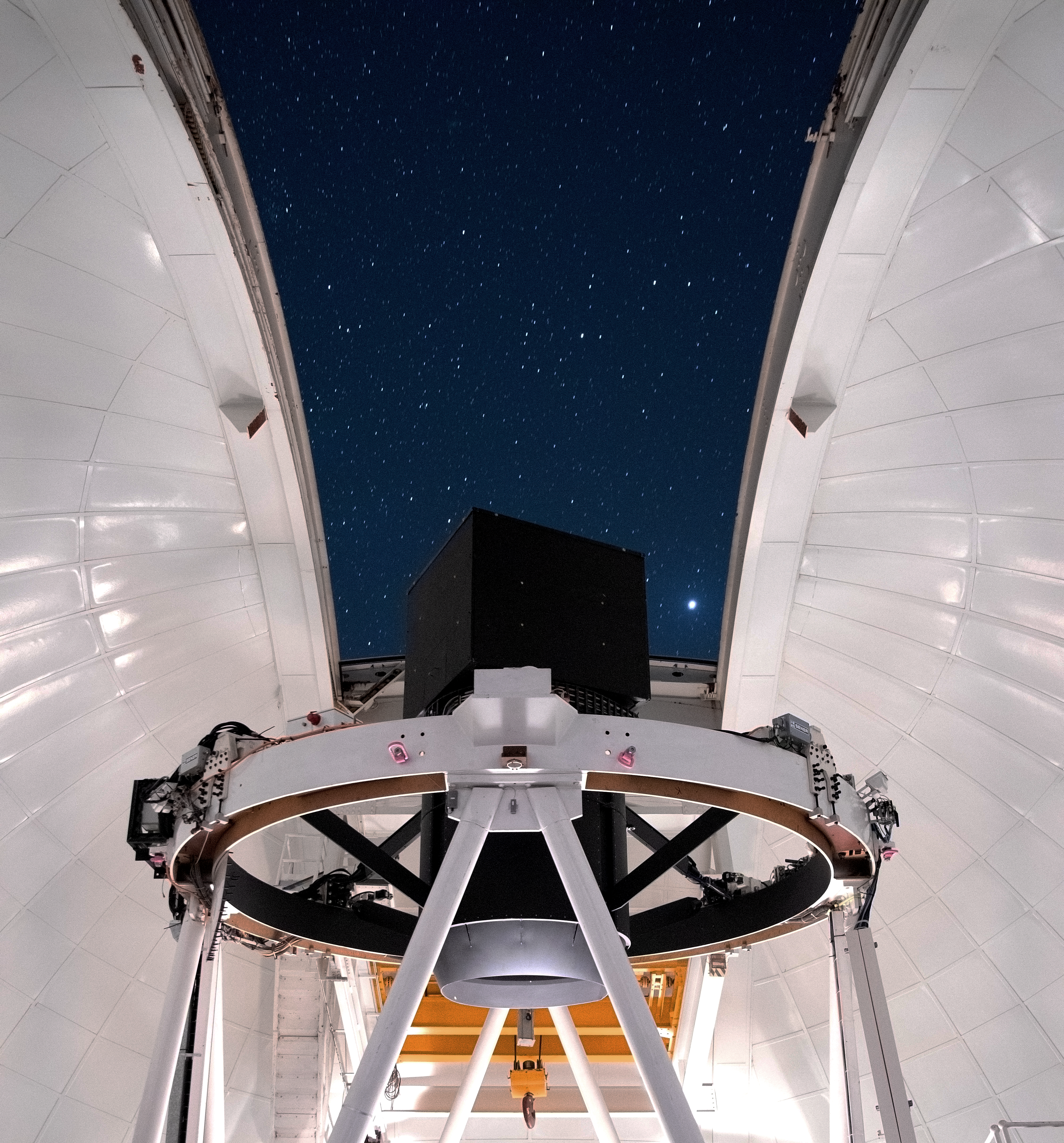
About the William Herschel Telescope
The Willliam Herschel Telescope (WHT) is operated on the island of La Palma by the Isaac Newton Group of Telescopes (ING) in the Spanish Observatorio del Roque de los Muchachos of the Instituto de Astrofísica de Canarias (IAC). The ING is funded by the Science and Technology Facilities Council (STFC-UKRI) of the United Kingdom, the Nederlandse Organisatie voor Wetenschappelijk Onderzoek (NWO) of the Netherlands, and the IAC in Spain. IAC's contribution to the ING is funded by the Spanish Ministry of Science, Innovation and Universities.
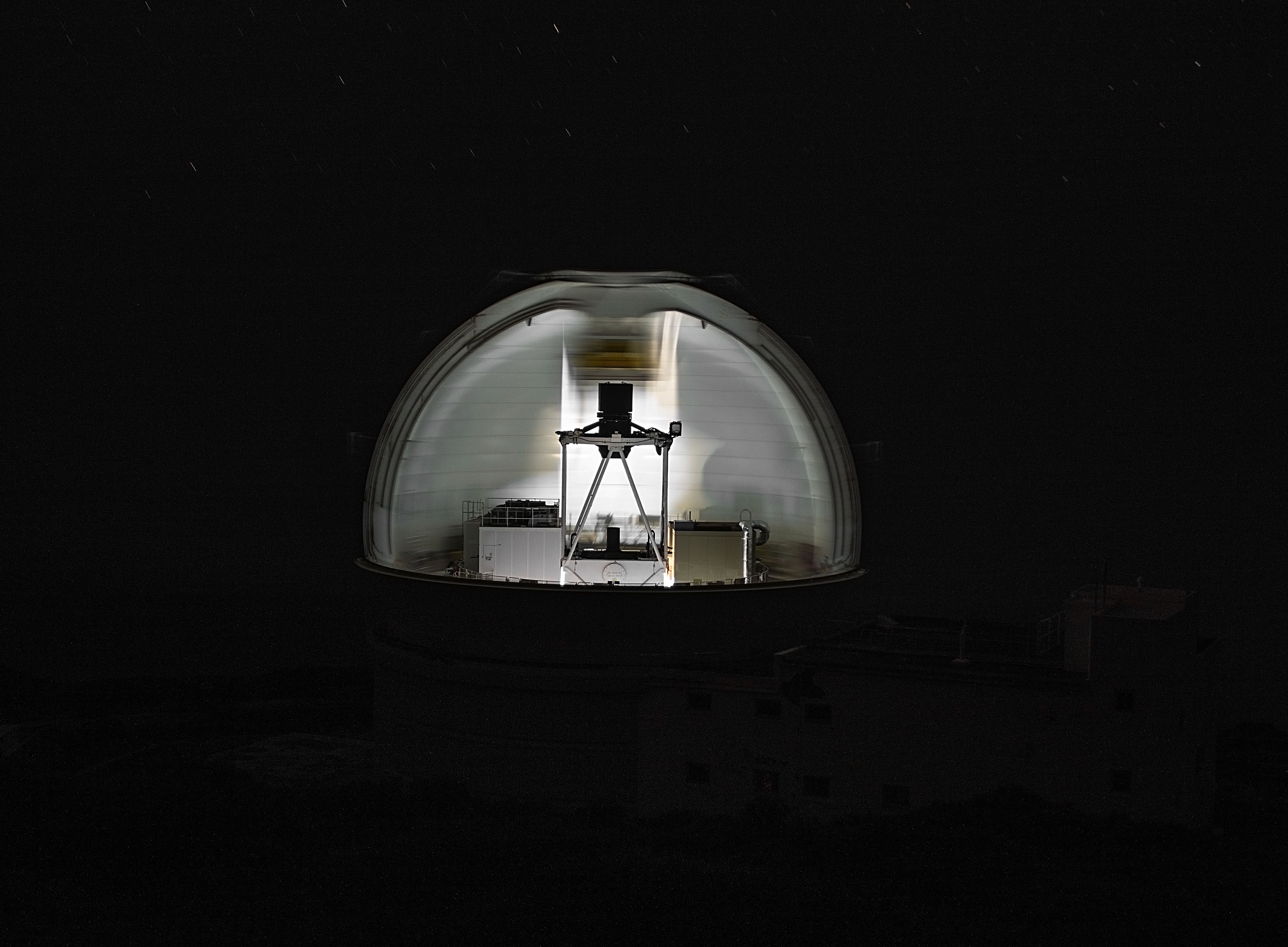
Research paper M. I. Arnaudova et al., 2024, "WEAVE First Light observations: Origin and Dynamics of the Shock Front in Stephan's Quintet", MNRAS, accepted for publication.
More information
"Inauguration of WEAVE", ING Press Release, 31 October 2023.
"WEAVE First Light", ING Press Release, 12 December 2022.
Jin S., et al., 2024, "The wide-field, multiplexed, spectroscopic facility WEAVE: Survey design, overview, and simulated implementation", MNRAS, 530, 2688. Paper.
